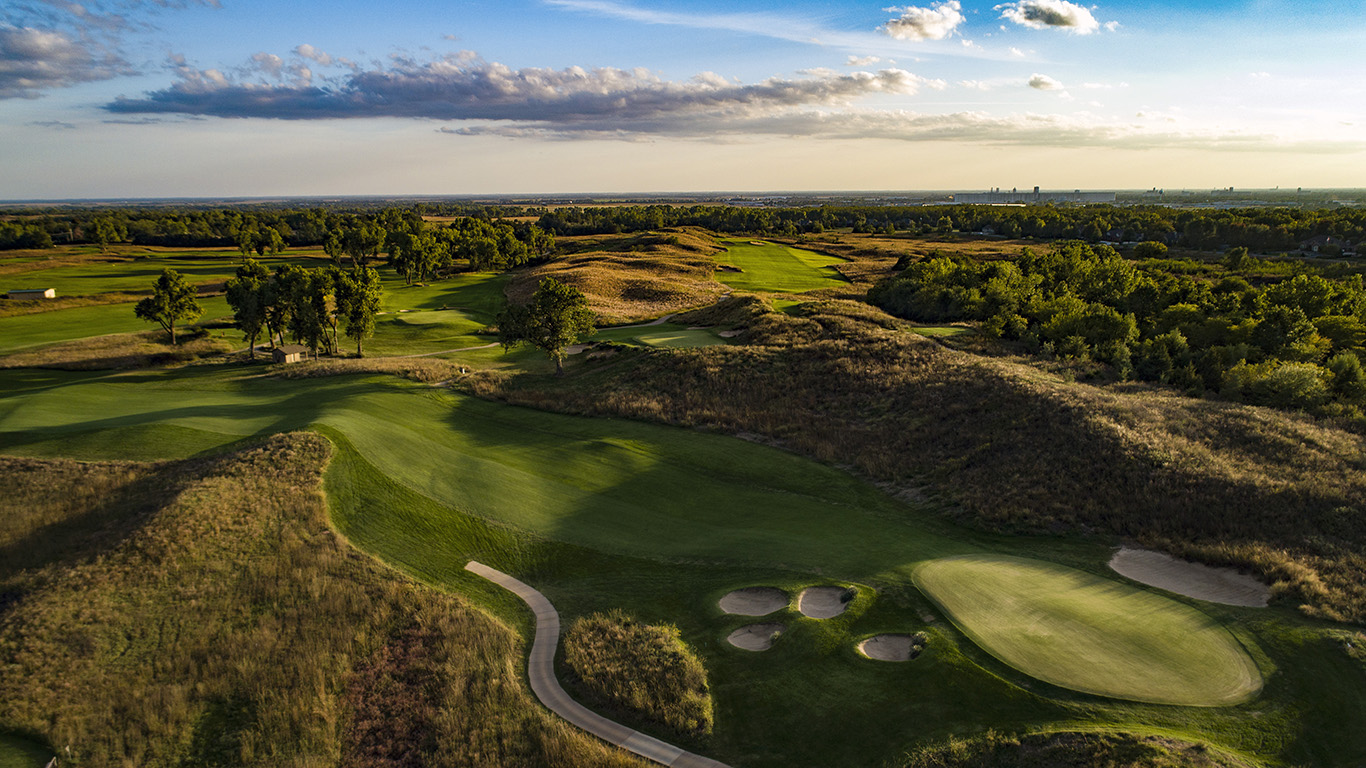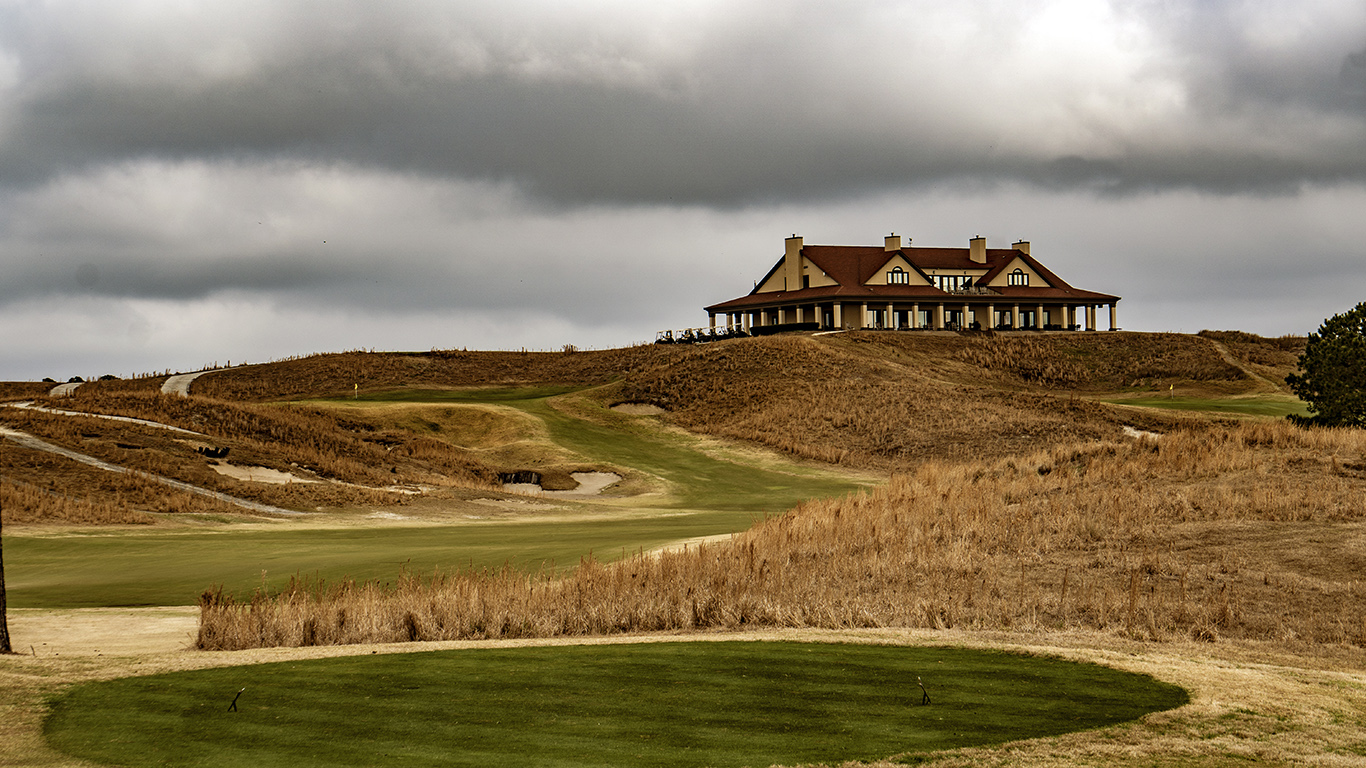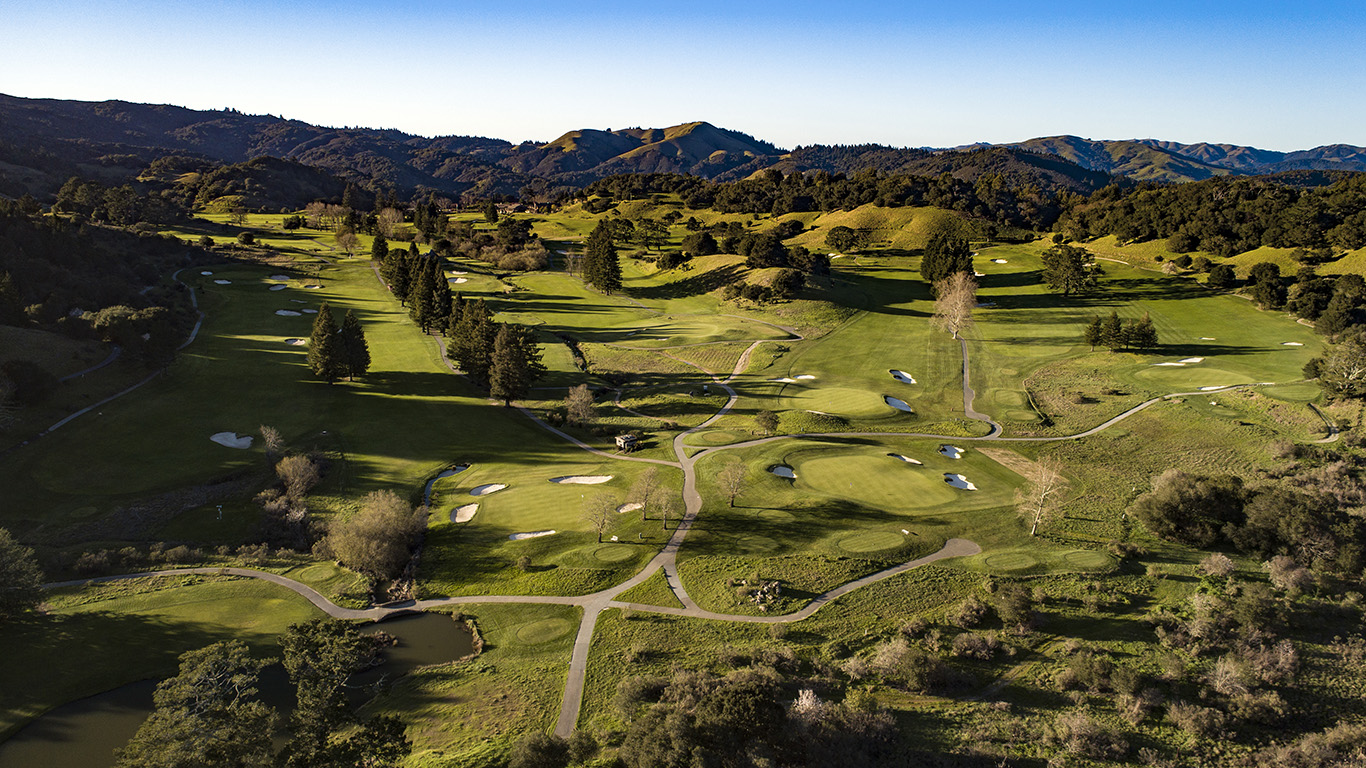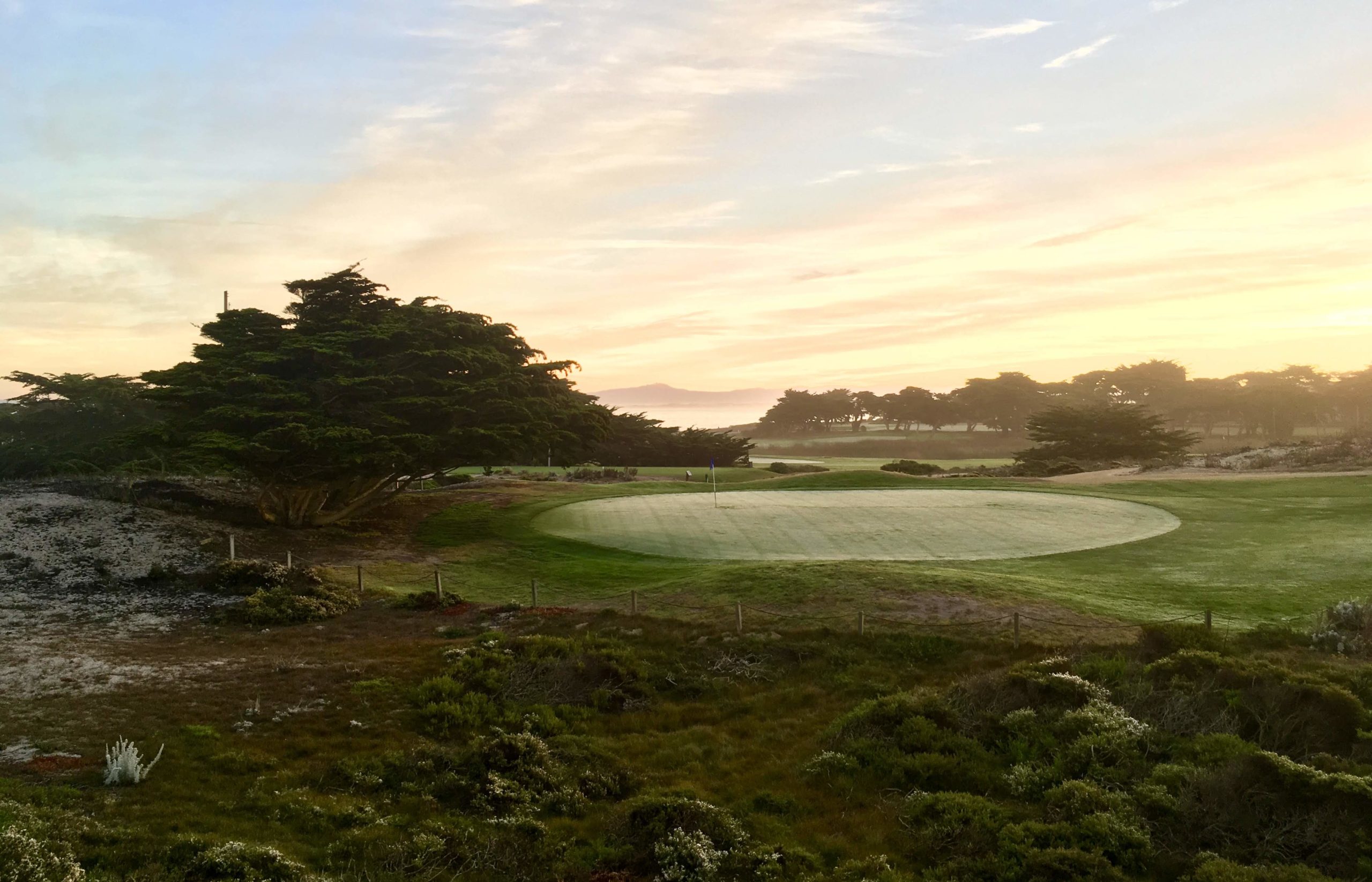What is the School of Golf Architecture?
Three years ago, Fried Egg founder Andy Johnson wrote a series of articles called Golf Course Architecture 101. Readers seemed to enjoy it, so we’ve recently been brainstorming ways to revisit the concept from a different angle.
Right on cue, we received a direct message on Twitter from Jamie Kennedy, who works for GolfTV. Basically Jamie said, “Hey, you guys should do short podcast episodes explaining the basics of golf architecture.” And immediately we thought, “Yeah, we probably should!” (Thanks, Jamie.)
We’re calling this new series the School of Golf Architecture. Think of me as the student: I’ll do some research, talk to some experts, and report my findings back to you. Each podcast installment will cover a single topic and have an interview bookended by opening and closing thoughts from me. We’ll also create posts—like this one—to accompany the episodes. Our goal is to make the discussion accessible to those who don’t know much about golf architecture yet interesting for those who know a lot.
Check out the first pod here (or just continue reading, or do both!):

The front nine at Perry and Press Maxwell's Prairie Dunes. Photo credit: Andy Johnson
Opening thoughts
Usually, an introduction to golf architecture would begin with a discussion of land: soil types, topography, geography, etc. These are important things to understand, and we will address them in Part 2, but I’d like to start by talking about the related but separate notion of place.
It’s tricky to define “place,” or to distinguish it from similar concepts like “land” or “site” or “space.” Entire books have been written on that subject—entire rows of books, in fact.
For now, though, we can keep it simple. Let’s define a place as a segment of space where life occurs. So golf courses, among other things, are places. They’re built and traversed by humans, and as a result they take on a kind of identity, or what we colloquially call a “sense of place.”
That phrase, “sense of place,” has become overused and stale today, but it’s rooted in an idea that dates back to ancient civilization. I’m talking about genius loci, which in Roman mythology referred to the guardian spirit of a place. Eventually the term evolved into a general way of describing a location’s prevailing atmosphere, its unique feel—derived not only from its sights and sounds and smells, but also from its community, history, and common uses.
All of this might sound a bit abstract and academic, but it’s just an attempt to put words to an instinctive, even visceral experience. Think of what it’s like to return to your childhood home, or to the main street in your college town, or to the golf course where you learned the game. That feeling you get, the one that lodges itself in the back of your throat, can be understood as your attachment to the spirit of that place.
Certain golf courses are better than others at cultivating those attachments between golfer and genius loci. Some are highly ranked: Prairie Dunes, Sand Hills, Cypress Point. But many others are lesser-known, possessing a lived-in sense of place that comes from simple design and maintenance: Pacific Grove in California, or Grindstone Neck in Maine, or Augusta Wind in Nebraska, or the homemade links of Great Britain and Ireland. While these courses may not excel in every aspect of golf architecture, they are alluring, and we need a vocabulary for describing why. As I’ve discovered recently, the vocabulary of place-based design is well suited to the task.
The term comes to us from the field of landscape architecture, but I found out about place-based design from Blake Conant. A Nebraska-based golf architect and builder, Blake owns the firm Dundee Golf and has worked with Tom Doak and Todd Eckenrode. As he puts it on his website, place-based design “explores the connection between the natural and built environments and finds ways to integrate the two together. It requires immersing oneself into the setting, studying its surrounding landforms, soil, existing vegetation, culture, community, and history to reveal the sites’ maximum potential.”
To learn more about these ideas, and generally about how the concept of place figures into golf architecture, I gave Blake a call.

The 9th and 18th holes at Mike Strantz's Bulls Bay. Photo credit: Andy Johnson
Highlights from the interview with Blake Conant
On how animals provide clues for place-based design:
Even if it’s not humans, if it’s just animals that occupy it, that could be a place. One of the cool things to start to look at is circulation and how animals moved around on the site before. Bill Coore has talked about that a lot, where he tries to find little rabbit tracks or sheep tracks to inform his routing—because if they’ve already figured out the easiest way to get around this place, then that should certainly inform how I want the golf course to function and circulate.
On the process behind place-based design:
I think a lot of that is spending time on site and doing your site analysis. If you’re trying to learn more about the place, it ultimately means you’ve got to spend a little more time, not only on site, trying to find the cool things about it—the way the way water works, the way it reacts during storms, things like that—but then also what’s the surrounding area like? What are the offsite influences? Who are the people that have used this space before? What are the towns or the people around it?
On landscape architect Jens Jensen’s five principles for place-based design:
He wanted to [1] understand local culture, [2] use native plants and local materials, [3] create space and view, [4] mingle light and shadow, and [5] he preferred organic forms in large-scale landscapes. And I was like, well, a ton of that stuff is useful in golf course architecture.
On how place-based design is a better term for what has been called “minimalism” in golf architecture:
It was just like, man, [place-based design] is the term that people should be using. “Minimalism” is the term that was applied to this movement that Tom [Doak] and Bill [Coore] sort of started. But to me, I also have an art background, and minimalism is not the best term for what that is. Minimalism is like a highly purified form of art. It condenses it down to its essential elements—very little ornamentation, simple design. It’s often geometric and repetitive. So when I started learning more about place-based design and reading about Jens Jensen or Aldo Leopold or Robert Marvin—it’s like, man, this is not reinventing the wheel. It’s just a better [term] to describe the way people have been designing courses since the Golden Age.
On golf courses expressing the character of their communities:
I want to continue always to go over to the British Isles and study the links courses over there. I’m curious about this idea that the nature of the people in these different towns gave a different character to the golf course. You know, the hardened people of Northern Scotland—were they creating more difficult courses, and they would go to the pub every night and have a beer and figure out a way to be more masochistic? And then people in Ireland, maybe they’re a more witty or clever or playful group, and so they create more playful routings. That’s part of the reason I like learning about the people and learning about the culture. You can get to know who these people are and what place they are, and place obviously informs who people are.

Alister MacKenzie's Meadow Club. Photo credit: Andy Johnson
Closing thoughts
What Blake he helped me realize toward the end of our conversation was that golf architecture could be a kind of countercultural force.
In the 20th century, building design and urban planning became more standardized. We got away from vernacular architecture, in which communities by necessity relied on local materials and local modes of construction. What we build today tends to function more predictably and safely, to be sure—but often lacks a distinctive sense of place. Malls and big box stores, wherever they are, look and feel more or less the same.
Golf courses, then, could serve as a contrast to that homogeneity. They could remind people of the indigenous terrain of their region, like Jens Jensen’s parks do in Chicago, or they could simply feel unique, breaking up the sameness of most urban and suburban landscapes. Some older, more vernacular courses do this without even seeming to try.
But if place-based design is different from naturalism, does that mean it can be artificial? I believe so, but the architect had better be artistically persuasive. C. B. Macdonald and Seth Raynor were masters at blending the natural and the artificial, but in the modern era of massive earthmoving, Mike Strantz was especially adept at lending a spirit of place to manufactured environments. So was Pete Dye, at his best.
Most of the courses I love, however, sit lightly on great properties and derive their ambience from what was there before. By the same token, many of the courses that don’t resonate with me are overtly artificial—and fail to do anything compelling with their artificiality. It’s tough, after all, for an architect to compete with mother nature.
Update, 3/4/20
On Twitter, Blake shared some follow-up thoughts (click through to view the full note):
Thanks for having me on, Garrett. It’s fun to talk about this stuff conceptually. I had some more thoughts based on your question at the end. We left some meat on the bone, no doubt. pic.twitter.com/kmPrEjZ8Aa
— Blake Conant (@Dundee_Golf) March 5, 2020
We could have kept talking about place-based design for a while longer, it seems! What Blake says about discovery particularly resonates with me. Many courses with strong spirits of place revolve around a few “found holes” and have routings that incrementally reveal—or allow golfers to discover—different layers of the property.
I’m also intrigued by Blake’s commitment to practicing place-based design on (what have historically been considered) subpar sites. It is on poor land that golf architects have traditionally done their most artificial, place-indifferent work. But Blake is proposing another approach—one that seeks the unique character of every property, no matter how ill-suited it seems.

The 14th green at Jack Neville's back nine at Pacific Grove. Photo credit: Garrett Morrison
Further exploration
- Jens Jensen, Siftings—This lovely 1939 volume is both a memoir and a statement of philosophy by the Danish landscape architect.
- Yi Fu Tuan, Space and Place: The Perspective of Experience—The classic philosophical study of how people interact with space and how they form attachments to places. Academic and challenging, but worth the effort.
- J.B. Jackson, A Sense of Place, A Sense of Time—An essay collection full of surprising insights into modern American landscapes.
- Placeness.com—A scholarly blog that offers rich, well-informed musings on the concept of place.


 by
by 
